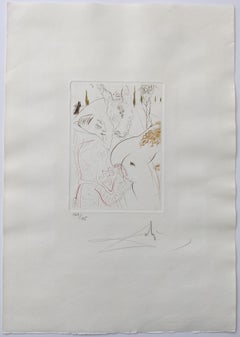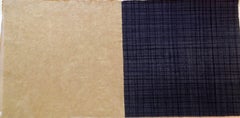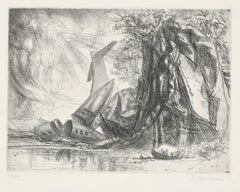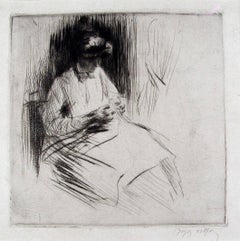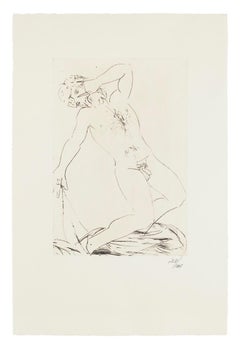Drypoint Prints and Multiples
1970s Drypoint Prints and Multiples
Drypoint, Etching
Late 19th Century Realist Drypoint Prints and Multiples
Drypoint, Etching
Early 2000s Minimalist Drypoint Prints and Multiples
Drypoint, Lithograph
1970s Contemporary Drypoint Prints and Multiples
Drypoint, Etching
Early 1900s Post-Impressionist Drypoint Prints and Multiples
Drypoint
1960s Modern Drypoint Prints and Multiples
Drypoint, Etching
1960s Modern Drypoint Prints and Multiples
Etching, Drypoint
1910s Futurist Drypoint Prints and Multiples
Drypoint, Etching
1910s Futurist Drypoint Prints and Multiples
Drypoint, Etching
1910s Futurist Drypoint Prints and Multiples
Drypoint, Etching
1910s Futurist Drypoint Prints and Multiples
Drypoint, Etching
1910s Futurist Drypoint Prints and Multiples
Drypoint, Etching
1950s Drypoint Prints and Multiples
Etching, Drypoint
20th Century Modern Drypoint Prints and Multiples
Drypoint, Aquatint
Early 20th Century Drypoint Prints and Multiples
Drypoint, Etching
1970s Drypoint Prints and Multiples
Drypoint, Etching
1960s Drypoint Prints and Multiples
Drypoint, Etching
1910s American Impressionist Drypoint Prints and Multiples
Drypoint, Aquatint
1970s Contemporary Drypoint Prints and Multiples
Drypoint, Etching
1960s Contemporary Drypoint Prints and Multiples
Drypoint, Etching
1970s Contemporary Drypoint Prints and Multiples
Drypoint, Etching
1910s Expressionist Drypoint Prints and Multiples
Drypoint
1940s Modern Drypoint Prints and Multiples
Drypoint, Etching
1910s American Impressionist Drypoint Prints and Multiples
Drypoint
1770s Old Masters Drypoint Prints and Multiples
Drypoint
Early 1900s Cubist Drypoint Prints and Multiples
Drypoint, Etching
1910s Impressionist Drypoint Prints and Multiples
Drypoint, Etching
21st Century and Contemporary Contemporary Drypoint Prints and Multiples
Drypoint, Mezzotint, Etching
1970s Surrealist Drypoint Prints and Multiples
Drypoint, Aquatint
Early 19th Century Romantic Drypoint Prints and Multiples
Drypoint, Etching, Paper
1970s Modern Drypoint Prints and Multiples
Drypoint, Etching
1920s Realist Drypoint Prints and Multiples
Drypoint, Etching
1920s Realist Drypoint Prints and Multiples
Drypoint
1920s Modern Drypoint Prints and Multiples
Drypoint
1850s Realist Drypoint Prints and Multiples
Drypoint
1910s Impressionist Drypoint Prints and Multiples
Drypoint
Late 19th Century Old Masters Drypoint Prints and Multiples
Drypoint, Etching
1920s Surrealist Drypoint Prints and Multiples
Drypoint, Etching
20th Century Modern Drypoint Prints and Multiples
Drypoint, Aquatint
20th Century Modern Drypoint Prints and Multiples
Drypoint, Aquatint
1970s Modern Drypoint Prints and Multiples
Drypoint
1970s Modern Drypoint Prints and Multiples
Drypoint, Aquatint
20th Century Surrealist Drypoint Prints and Multiples
Drypoint, Etching
Early 1900s Drypoint Prints and Multiples
Drypoint, Etching, Aquatint
Early 2000s Contemporary Drypoint Prints and Multiples
Drypoint, Etching
1910s Impressionist Drypoint Prints and Multiples
Color, Drypoint, Aquatint
20th Century Abstract Drypoint Prints and Multiples
Paper, Drypoint, Etching, Aquatint
2010s Drypoint Prints and Multiples
Drypoint, Etching, Aquatint
1960s Surrealist Drypoint Prints and Multiples
Paper, Watercolor, Drypoint, Etching
1920s Modern Drypoint Prints and Multiples
Drypoint, Etching
1920s American Impressionist Drypoint Prints and Multiples
Drypoint
1990s Contemporary Drypoint Prints and Multiples
Paper, Drypoint, Monoprint
1990s Expressionist Drypoint Prints and Multiples
Drypoint, Monoprint, Monotype
1990s Drypoint Prints and Multiples
Drypoint
1970s Pop Art Drypoint Prints and Multiples
Drypoint, Etching
2010s Contemporary Drypoint Prints and Multiples
Drypoint
2010s Abstract Drypoint Prints and Multiples
Drypoint, Aquatint
1960s Surrealist Drypoint Prints and Multiples
Paper, Watercolor, Drypoint, Etching
1950s Abstract Drypoint Prints and Multiples
Drypoint
1920s Expressionist Drypoint Prints and Multiples
Drypoint
Original Drypoint Art and Other Fine Art Prints
Original drypoint prints and other types of fine art prints can help enhance any room in your home while supporting your effort to tie an interior design together.
Similar to engraving, with drypoint, an artist incises a metal plate with a sharp tool. As the metal is carved, metal shavings, also called the burr, build up in the grooves. But unlike with engraving, the burr is not cleaned away with drypoint, resulting in very soft, velvety lines. Since the burr slowly wears away with each printing, fewer impressions can be made, and the first impression tends to be stronger than the last — a characteristic that sets the technique apart from many other printing methods.
Drypoint is a simple technique used to produce intaglio prints. Intaglio is a broad term for the variety of methods used to create images by incising a metal plate, either with a sharp instrument (engraving, drypoint and mezzotint) or with acid (etching, aquatint and photogravure).
“If you talk to great artists, they see printmaking as another part of their practice that often informs what they do,” says Sharon Coplan Hurowitz, a print specialist and art adviser who has worked on major print projects over the years with Johns and Ellsworth Kelly and authored the catalogue raisonné of John Baldessari’s prints.
Find a collection of drypoint art and other types of prints on 1stDibs.
Read More
Red Grooms’s 3D Tugboat Is a Chaotic, Comic Take on New York Life
The sculptural lithograph is part of the inimitable artist’s “Ruckus” series, now on view at the Brooklyn Museum.
Joan Mitchell’s Rare, Late-Career Diptych Buzzes with Life
Beneath the inky blackness, the painter’s irrepressible energy electrifies this pair of intaglio prints.
The 1stDibs Guide to Types of Abstract Art
Get to know the key movements and artists who have influenced visual culture for more than a century.
Romare Bearden’s Humanity Infuses His Bright, Bold Art
Through collage, painting and printmaking, the artist foregrounded Black life in America in revolutionary new ways.
Andy Warhol and Suzie Frankfurt’s ‘Wild Raspberries’ Cookbook Is an Artful, Fanciful Delight
This set of recipes and original prints might not make you a better chef. But it will make you smile.
Art Brings the Drama in These Intriguing 1stDibs 50 Spaces
The world’s top designers explain how they display art to elicit the natural (and supernatural) energy of home interiors.
Welcome (Back) to the Wild, Wonderful World of Walasse Ting
Americans are rediscovering the globe-trotting painter and poet, who was connected to all sorts of art movements across a long and varied career.
Shapero Modern’s Director Tells Us All about 20th-Century Prints
Tabitha Philpott-Kent knows a lot of art multiples. Here, the London gallery director talks about what makes printmaking so fabulous.
